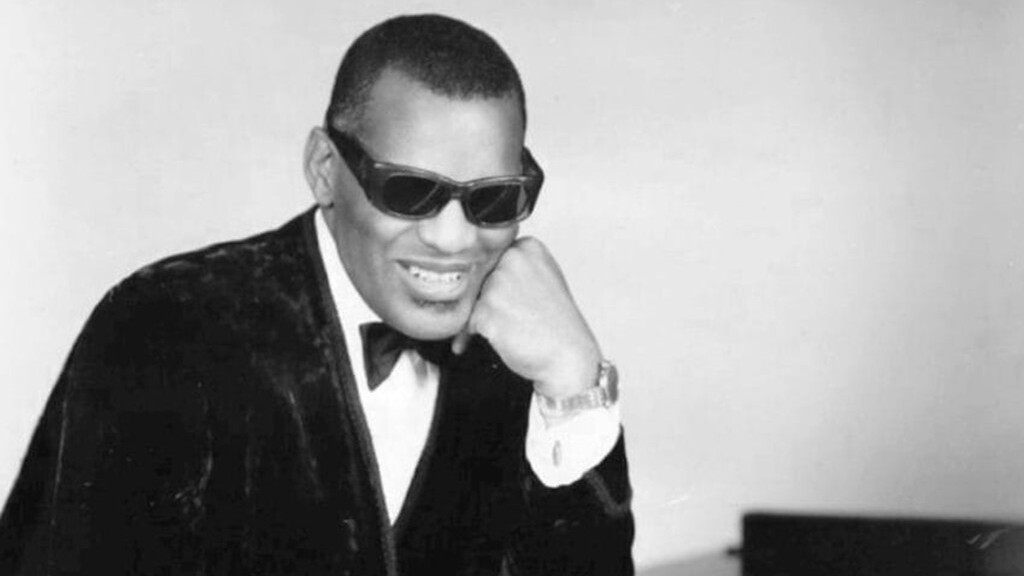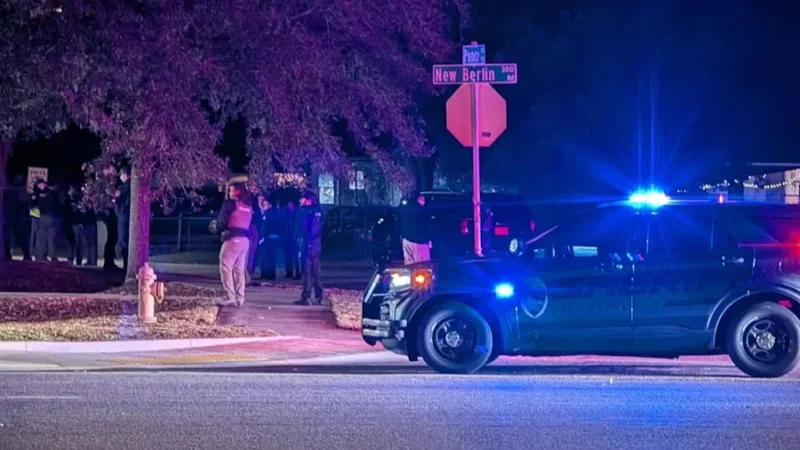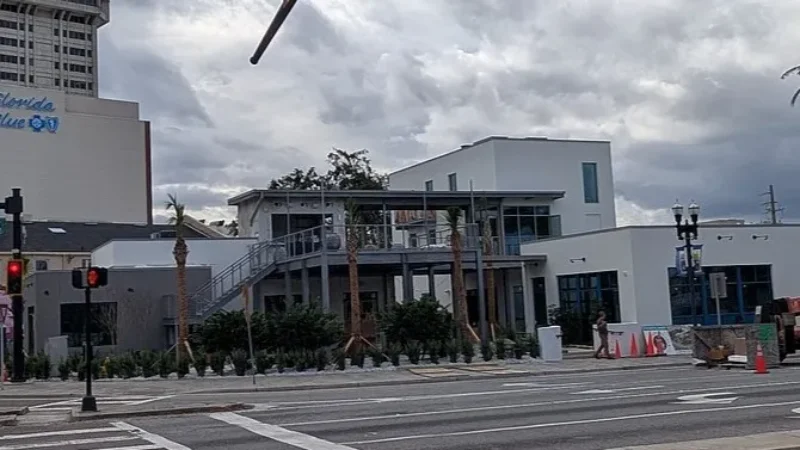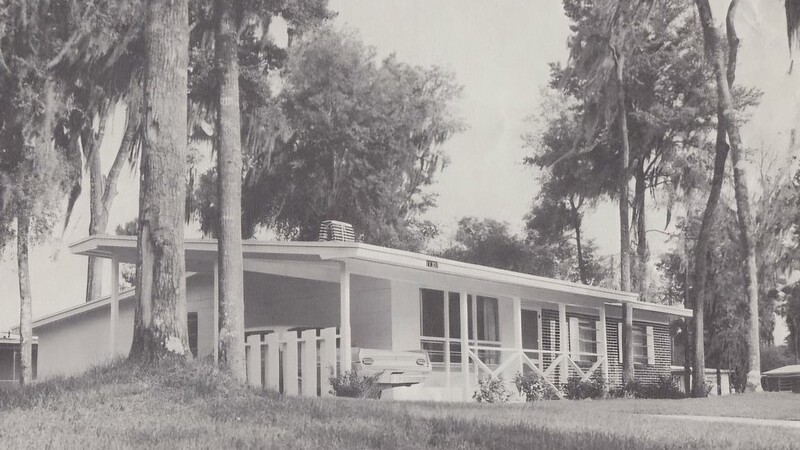
American musical icon Ray Charles launched his career as a pianist, singer, composer and bandleader in Jacksonville. Ray Charles Robinson was born in Albany, Georgia, on September 23, 1930. His parents were Bailey Robinson and Aretha (“Reatha”) Robinson. Known by his friends as R.C., he lost his sight by the age of 7 while growing up in Greenville, Florida, about two hours west of Jacksonville. He attended the Florida School for the Deaf and the Blind in St. Augustine from 1937 to 1945.
Following his mother’s death in spring 1945, he quit school and moved to Jacksonville at the age of 15 with the intent to gain professional music experience in the big city. Here are six sites associated with Ray Charles’ time as an up-and-coming musician in Jacksonville.
Jacksonville Terminal, 1000 Water St.

Ray Charles Robinson arrived in Jacksonville by train. His 126-mile train ride started in Greenville and ended at LaVilla’s Jacksonville Terminal. At the time, the Jacksonville Terminal was the largest passenger railroad station in the South. Millions of railroad passengers passed through the LaVilla station’s concourse or platforms each year, including the Duke and Duchess of Windsor in 1941 and every president between Warren G. Harding and Richard Nixon. Traffic at the train station peaked in 1944, a year before Charles’ arrival, when nearly 40,000 trains passed through the terminal, carrying nearly 10 million passengers. To support operations of such a large facility, the Jacksonville Terminal Co. employed more than 2,000 people, making it the second-largest employer in the city at the time.
Fred and Lena Mae Thompson Residence, 752 W. Church St.

Following the death of his mother, Charles made up his mind to quit school and move to the big city of Jacksonville because he thought he was ready for the world and the experiences that came with that. Fred and Lena Mae Thompson, friends of his family, gave him the perfect opportunity and excuse to move to town when they agreed to let him live with them.
The Thompsons lived in an upstairs apartment at 752 W. Church St. in LaVilla. Charles slept in his own room near the kitchen. Fred Thompson showed Charles around LaVilla and soon he memorized his way around town without using a cane or guide dog by paying attention to little things like drainage pipes, sewers, and cracks in the sidewalk. At home, Charles and the Thompsons listened to radio shows like Grand Ole Opry, Inner Sanctum, Suspense, and The Shadow.
St. Pius V Catholic Church

During his time in Jacksonville, Ray Charles spent considerable time at St. Pius V Catholic Church in LaVilla. Originally the Black Catholics in town were a part of the Immaculate Conception Parish. Restricted to side doors, not being able to serve at the altar or sing in the choir due to racial discrimination, Black parishioners decided to establish their own parish.
As one parishioner expressed it, “We’re sick and tired of being side-door, back-pew Catholics. If we are going to share equally in His Kingdom of Heaven, why can’t we share equally in His Kingdom on Earth?”
On February 27, 1921, a new building for the St. Pius V Catholic Church was dedicated on the corner of State and Lee streets. During his time in Jacksonville, Charles was known to visit this site. Much of the area in the vicinity of St. Pius V was razed for the construction of Interstate 95 during the late 1950s and early ’60s. As a result of the area’s deterioration, the parish relocated to a new site in Durkeeville in 1961.
American Federation of Musicians Jacksonville Local 632 Union, 615 W. Ashley St.

The Local 632 of the American Federation of Musicians was at the center of Jacksonville’s vibrant music scene. Located on the third floor of the Clara White Mission building, Local 632 was created to represent the union’s Black musicians in the Jacksonville area.
In 1945, a young Ray Charles joined Local 632 to help him find work and practice piano. The union hall piano allowed him to practice when he didn’t have one at home. Visiting the Local 632 daily, Charles learned piano licks from copying other musicians there and started to build a reputation as a talented musician. His earliest opportunities to play with big acts, Henry Washington and Tiny York, came through connections made at the Local Union 632. The American Federation of Musicians eliminated segregated locals in 1964 after the Civil Rights Act was passed.
Lenape Bar, 644 W. Ashley St.

Genovar’s Hall was originally built in 1895, serving as a grocery market owned by Sebastian Genovar. During the first decades of the 20th century the building was occupied by a variety of businesses including a distillery, furniture store, shoe repair shop, restaurants and furnished rooms upstairs.
In 1931, the Wynn Hotel opened in the building’s upper floors. operated by Jack D. Wynn, the hotel became a favorite spot of Louis Armstrong when visiting Jacksonville. In town to perform at the nearby Knights of Pythias Hall, Armstrong preferred lodging at the Wynn because it was in the heart of LaVilla’s nightlife and entertainment scene.
For many decades, the first floor was occupied by the Lenape Tavern and Bar. Dating back to the early 1930s, the Lenape was one of the popular live performance venues on the Ashley Street strip. During the 1940s, two old metal hitching rails stood in front of the bar. Known as “the rail of hope,” musicians and waiters hung out, hoping a big-name band would come along and hire them for a gig. Ray Charles was among the young musicians who hung out there.
The Two Spot, 1646 W. 45th St.

Opening its doors on Christmas Day 1940, James “Charlie Edd” Craddock’s Two Spot was said to be the finest dance palace in the country owned by an African American. Craddock, the kingpin of LaVilla’s Ashley Street, also owned the Charlie Edd Hotel, the Blue Chip Hotel, and Young Men’s Smoke Shop.
The dance floor could accommodate 2,000 and another 1,000 could be seated surrounding it and on the mezzanine level. The venue also contained a bar, private dining rooms, a cafeteria, speedway and cabins for overnight stays. Live acts at the Two Spot included B.B. King, Sam Cooke, James Brown, Charlie Singleton, Jackie Wilson, Lionel Hampton, Dinah Washington, Tiny York, Teddy Washington and trumpeter Nat Small.
According to Charles’ autobiography, Brother Ray, local musician Henry Washington’s band was the first big band Charles played with. A regular at the Two Spot in Moncrief, Washington was a drummer with a big band said to be in the style of Count Basie and Billy Eckstine’s big bands. For a 15-year-old Charles, playing the piano at the Two Spot was exciting because it served liquor and he was way underage at the time.
He eventually changed his name to Ray Charles to avoid confusion with boxing champion “Sugar Ray” Robinson. In 1946, Charles left Jacksonville to continue his career.
By the time of his death at age 73 in 2004, Charles had become known as “The Genius of Soul” and one of the world’s most loved entertainers.







